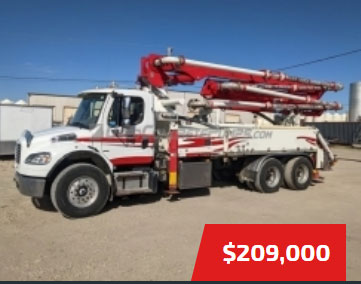| Bob | 01-21-2009 | comment profile send pm notify |
|
By JOHN COLLINS RUDOLF Published: January 19, 2009 TEMPE, Ariz. — Dave Brown, one of this city’s best-known home builders, had kept his head above water through the housing downturn, not missing a single interest payment on his loans. Skip to next paragraph So he was confounded a few months back when one of his banks, spooked by the decline in his company’s revenue, suddenly demanded millions of dollars in additional collateral to continue carrying loans on his projects. He was unable to come up with the money, and in October, JPMorgan Chase foreclosed on five of his developments. Shortly thereafter, Brown Family Communities, 33 years in the business, decided to shut its doors. “They treated me like a deadbeat who missed his car payment,†said an embittered Mr. Brown, 76. “They wanted their money now.†After riding high on one of the greatest housing booms in American history, the nation’s home builders today face a devastating reversal of fortune. Although the housing crisis is nearly two years old, many banks had refrained from cracking down on small home builders. They are starting to do so, and a wide swath of the industry could be forced out of business in the next few years. The trouble is concentrated especially in the Sun Belt, the scene of so much overbuilding. Not only have new-home sales stagnated, but builders confront a rising wave of foreclosed properties coming to market at prices below the cost of building a new home. To move houses, they have to mark them down to less than the cost of construction. The convergence of these problems is bringing many small and medium-size builders — who account for about 70 percent of new-home construction in the United States — to their knees. “The reality is, we’re seeing conditions in home construction and home finance that are the worst since the Depression,†said Steve Fritts, associate director of risk management policy at the Federal Deposit Insurance Corporation, the government agency that insures bank deposits. Life has been difficult for large publicly traded home-building companies as well, where stock prices have collapsed and construction sharply cut back. Yet for now, many of the public companies can meet their obligations. “They’re better capitalized and they have cash on hand,†said Ivy Zelman, a housing analyst. “They’re in a much better position than the private builders.†No hard count exists of precisely how many builders have gone out of business since the downturn began. According to an estimate by the National Association of Home Builders, at least 20,000 builders — about a fifth of the total nationwide — have closed up shop in the last two years. With the industry still owing hundreds of billions of dollars in loans made at the market peak, many more face insolvency in the coming months and years. “Probably north of 50 percent will fail,†Ms. Zelman said. Much of that borrowed money went to finance land deals that now appear to have been catastrophic miscalculations. In cities like Phoenix, where housing starts are near record lows, demand for undeveloped land has plummeted, and prices have followed. As defaults and delinquencies rise, home builders, once prized banking customers, have become pariahs. Even builders who are up to date on their interest payments or still managing to sell houses are getting trampled, as in the case of Mr. Brown. “They’re not distinguishing the track records of one borrower against another,†said John Fioramonti, a real estate consultant in Scottsdale, Ariz. “If you’re a builder, you are a bad risk.†With the pullback accelerating, complaints among builders of hardball tactics and shoddy treatment by banks are mounting, as is a general sense of betrayal. “The behavior of the banks is unprecedented,†said Mick Pattinson, a home builder from Carlsbad, Calif. who has organized a national coalition of builders to draw attention to what they regard as unreasonable treatment. “Yes, there was overleveraging in the industry. But the aftermath doesn’t need to have been as brutal as it has been.†Some experts defend the banks, saying they are starting to do what is necessary to come to grips with the turmoil in real estate. For months, they have been under pressure from federal bank regulators and their own shareholders to curtail lending to a faltering industry. “The lenders are not operating irrationally or unfairly, generally speaking,†Mr. Fritts said. “They have to protect themselves.†Access to credit is essential to builders, who rely heavily on borrowed money to finance land acquisitions and home construction. More than 15 percent of loans for single-family home construction were in some form of default by September 2008, up from 10 percent in January of that year, according to figures from Foresight Analytics, a housing analysis firm. Still, until recently, banks had largely chosen to keep past-due borrowers afloat, in the hope that a housing recovery might pave the way for them to repay their debts in full. Times Topics: Credit Crisis -- The EssentialsOnly now, with the economic outlook darkening, are lenders stepping up foreclosures of troubled loans. Zelman & Associates, a housing analysis firm, estimates that losses on land and construction loans could eventually reach $165 billion, one reason federal regulators are pushing banks to come to grips with the problem. “When we talk to regulators now, they say they’ve lost patience,†said Ms. Zelman, who is chief executive of Zelman & Associates. In this climate, keeping loan payments up to date — something many builders are struggling mightily to do — is not necessarily any protection. Many loans in the building industry are of short duration, coming up for renewal at least once a year. This allows banks to take a fresh look at the financial health of a borrower, as well as the assets securing their debt. A steep fall in cash flow or a decline in the value of the collateral — usually building lots or half-built houses — can mean an automatic default, whether a borrower has missed payments or not. It was a combination of these factors that put an end to Mr. Brown’s home-building company, Brown Family Communities. In 2005 and 2006, with loans from JPMorgan Chase and the big finance company GMAC, Brown Family Communities bought hundreds of acres of land on the far outskirts of Phoenix, in towns like Goodyear and Buckeye, where development was rapidly transforming cotton and alfalfa fields into malls and upscale subdivisions. The company was emerging from a record year in 2005, selling an average of 85 homes a month and booking revenues of $352 million. Each succeeding year brought a decline in sales, and by 2008, the company was on pace to sell fewer than 300 homes. A glut of foreclosures on the market drove down prices, forcing Mr. Brown’s company to discount homes by as much as $100,000. In early 2008, GMAC, citing the depreciating worth of assets the company had used as collateral, shut off construction loans for two subdivisions under development. Though Brown Family Communities had yet to miss a payment, renegotiating the debt proved impossible, and GMAC — struggling with huge problems of its own because of the global credit crisis — foreclosed on the neighborhoods. “They were in chaos,†Mr. Brown said of GMAC. “We couldn’t even get them on the phone.†In late July, JPMorgan Chase followed suit, freezing construction loans on five subdivisions it had financed. Again, a workout proved elusive. And this time, when the bank foreclosed, it delivered a fatal blow to Brown Family Communities. Neither JPMorgan Chase nor GMAC would comment on their banking relationship with Mr. Brown’s company. “We have been and continue to work with our clients to find the best solution to manage risk for them and for us,†said Mary Jane Rogers, a spokeswoman for JPMorgan Chase. In one otherwise finished subdivision, a half-dozen of Mr. Brown’s partially built homes stand amid weeds, their wooden frames slowly bleaching in the desert sun. In another, chain-link fences surround houses that appear only days from completion. Buyers were lined up for several of the homes before the bank halted construction, Mr. Brown said. But they are long gone. “Now you talk about good business sense — the bank wouldn’t allow us to finish them,†he said. “Did the bank get millions less than if they had handled it differently? Yes.†With thousands of small and midsize builders facing similar circumstances, the outlook for the industry is dire. “The downturn that we’re experiencing right now is so unprecedented that there’s really no business model that works,†said Joel Shine, a real estate investor. Some builders are now demanding federal relief. They want a tax credit of up to $22,000 for new-home purchases and they want the government to buy down interest rates on new mortgages, to 3 to 4 percent. Some analysts, however, believe such a bailout would artificially re-inflate home prices and encourage further building in a saturated market. “What is the public good for that?†asked Thomas Lawler, a housing analyst and former vice president for risk analysis at Fannie Mae. Meantime, new construction has collapsed, sending workers in search of employment. Brown Family Communities had a full-time staff of 160 at its peak, not including the thousands of subcontractors at work on hundreds of home sites. Now, only a handful of employees are left. Mr. Brown found it excruciating to fire the people who had helped him build his business. “They’d come in and say goodbye and we’d have a good cry and then they’d go on their way,†Mr. Brown said. “There’s nothing out there for them. The real estate market’s gone.†|
||
| kneerick | 01-21-2009 | reply profile send pm notify |
|
this really sucks one of my best customers just lost a contract,the other guy was $2000 cheaper.this whole sign of the times thing sucks,what ever happend to giving a crap about what you do or the finished product! |
||
| eugene | 01-21-2009 | reply profile send pm notify |
|
so one of my customers bought five lots last year and sold three, now that he wants to build number four he is told that his 90K lot is worth 60K so he had to pay down to that value to get the construction loan and will have to do the same on the last lot i guess. |
||




















.jpg)
.gif)

.jpg)









.jpg)








